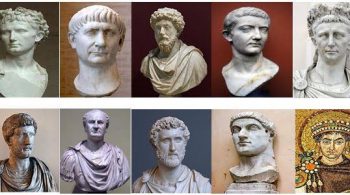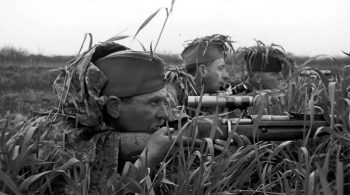We consider all types of aircraft studied or built prior to the development of the modern aeroplane in 1910 early flying machines. The story of modern flight begins more than a century before the first successful human-crewed aeroplane. And thousands of years before the first aircraft.
Legends of men using flying devices can be found in some ancient mythologies. The Greek legend of Daedalus is one of the earliest that we know; in Ovid’s version, Daedalus fastens feathers together with thread and wax to mimic the wings of a bird.
The Indian Vimana flying palace or chariot, as well as the biblical Ezekiel’s Chariot, are examples of ancient legends. Also, the Irish Roth rámach constructed by blind druid Mug Ruith and Simon Magus. Additionally various stories about magic carpets, and the mythical British King Bladud, who conjured up flying wings. Kay Kvus’ Flying Throne was a legendary eagle-propelled craft that the mythical Shah of Persia built. Kay Kvusused it to fly him all the way to China.

Early flying machines leonardo da vinci
We know the flying machine as the “ornithopter”. This is one of the most famous inventions of da Vinci. It describes his powers of observation and imagination. Also, it shows his enthusiasm for the potential of flight. Clearly, the flight of winged animals inspired this invention’s design, which da Vinci hoped to replicate. In fact, he mentions bats, kites, and birds as sources of inspiration in his notes.
The inspiration of the bat is perhaps most visible. Because, the device’s two wings feature pointed ends commonly associated with the winged creature. The wingspan of Leonardo da Vinci’s flying machine exceeded 33 feet. Additionally, he made the frame with the help of pine covered in raw silk. He did so to create a light but sturdy structure.
The pilot would keep lying face down on a panel in the invention’s centre. The pilot would pedal a crank connected to a rod-and-pulley system to power the wings. The machine also had a hand crank for increased energy output and a steering headpiece. The machine’s wings flap as the busy pilot spins cranks with his hands and feet. He designed the wings in a way that it twisted as they flapped. It demonstrated how nature inspired the invention.
Sadly, as Da Vinci may have realised this. The flying machine could have flown once in the air. But, a person could never have generated enough power to lift the device off the ground.
Funny early flying machines
Early inventors and aviators who dreamed of flying made many painful mistakes. But they had vision, perseverance, and faith — a lot of faith. So, eventually it led to modern aircraft. And the aerospace techniques that have made it possible to explore the skies.
1. Chinese war kite
The invention was in 500 BC. Thus, it is one of the early flying machines. Kites were large enough to carry a man. It were first used thousands of years ago in China. Primarily for military observation and occasionally as a punishment for misbehaving soldiers or prisoners. In the 6th and 5th centuries B.C., the Chinese general Kung Shu-Pan was a contemporary of Confucius. It is recorded that he has himself made an ascent riding. He did so on a wooden kite in order to spy on a city which he desired to capture. The kite had the shape of a bird.
Also, it could fly for three days and three nights.
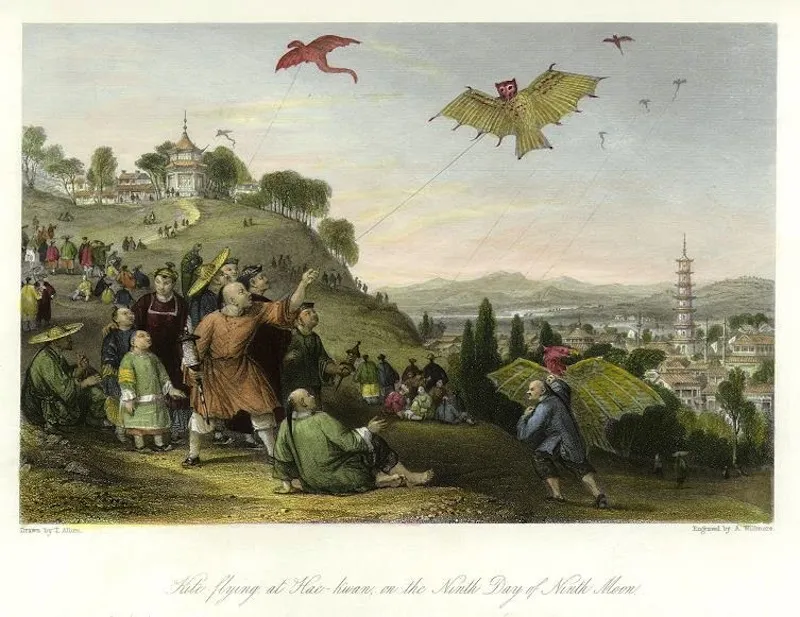
2. Clockwork flying dragon
The invention was in 1647. Tito Burattini was an Italian inventor and early scientist. He demonstrated a flying model glider called the “Dragon Volant” (Flying Dragon). He did it at the court of the King of Poland in Warsaw in 1647. Look at the contemporary descriptions and later drawings of the device. He made it with the help of cloth or paper stretched over a wooden frame. It had four flapping wings powered by springs.
Burattini relaunched the Dragon Volant in 1648. This time with a cat aboard, for a brief but turbulent gliding flight. He established a tradition that the animal astronauts of the American and Russian space programmes in the twentieth century followed
Burattini was unable to persuade the king to fund a full-sized version of the Dragon Volant. It was large enough to carry himself. But he was confident that landing his mechanical dragon would involve only the most minor difficulties. This would only hold if he could get off the surface.
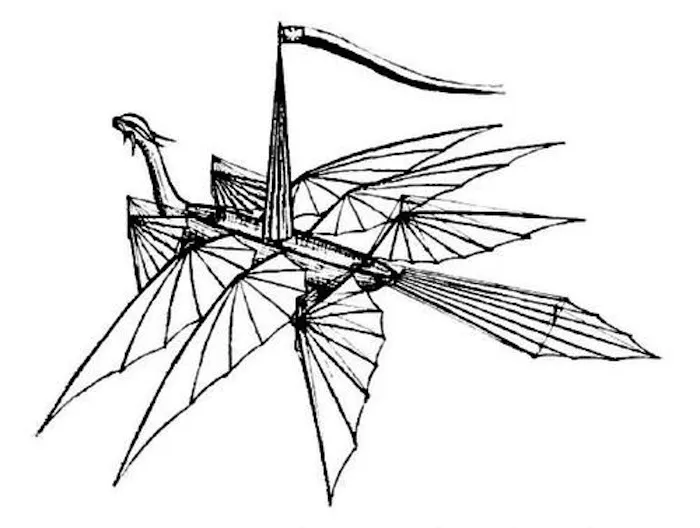
3. Emergency parachute
Long before anyone got one to work, several inventors seized on the idea of a parachute. This includes Leonardo Da Vinci in the 15th century. Thus, it is one of the early flying machines. He drew a pyramid-shaped parachute that he described as a tent made of linen. Of which the openings all stopped up. A man will be able to fall from any great height without being injured.
Fausto Veranzio was a Croatian inventor. He published a design for the Homo Volans, or “Flying Man,”. It was a parachute based on a ship’s sail. It had material stretched across a square wooden frame with ropes, in 1595.
The painful flight experiments that happened later are not recorded in history. But on December 26, 1783 something happened. The French inventor and scientist Louis-Sébastien Lenormand made what we consider to be the first successful parachute descent. From the tower of the Montpellier observatory, depicted in this 19th-century illustration.
Lenormand believed we could use his invention in an emergency. We can use it to escape from the upper floors of buildings in the event of a fire. And for his public test flight, he descended safely from a height of about 82 feet (25 metres). He used a 14-foot-wide parachute with a wooden frame of spokes shaped like an umbrella and covered in silk.
The balloonist Joseph Montgolfier, had pioneered the first manned air balloon flights with his brother Etienne. Just a few months earlier in the same year, he was among those in the crowd in front of the observatory for the demonstration.
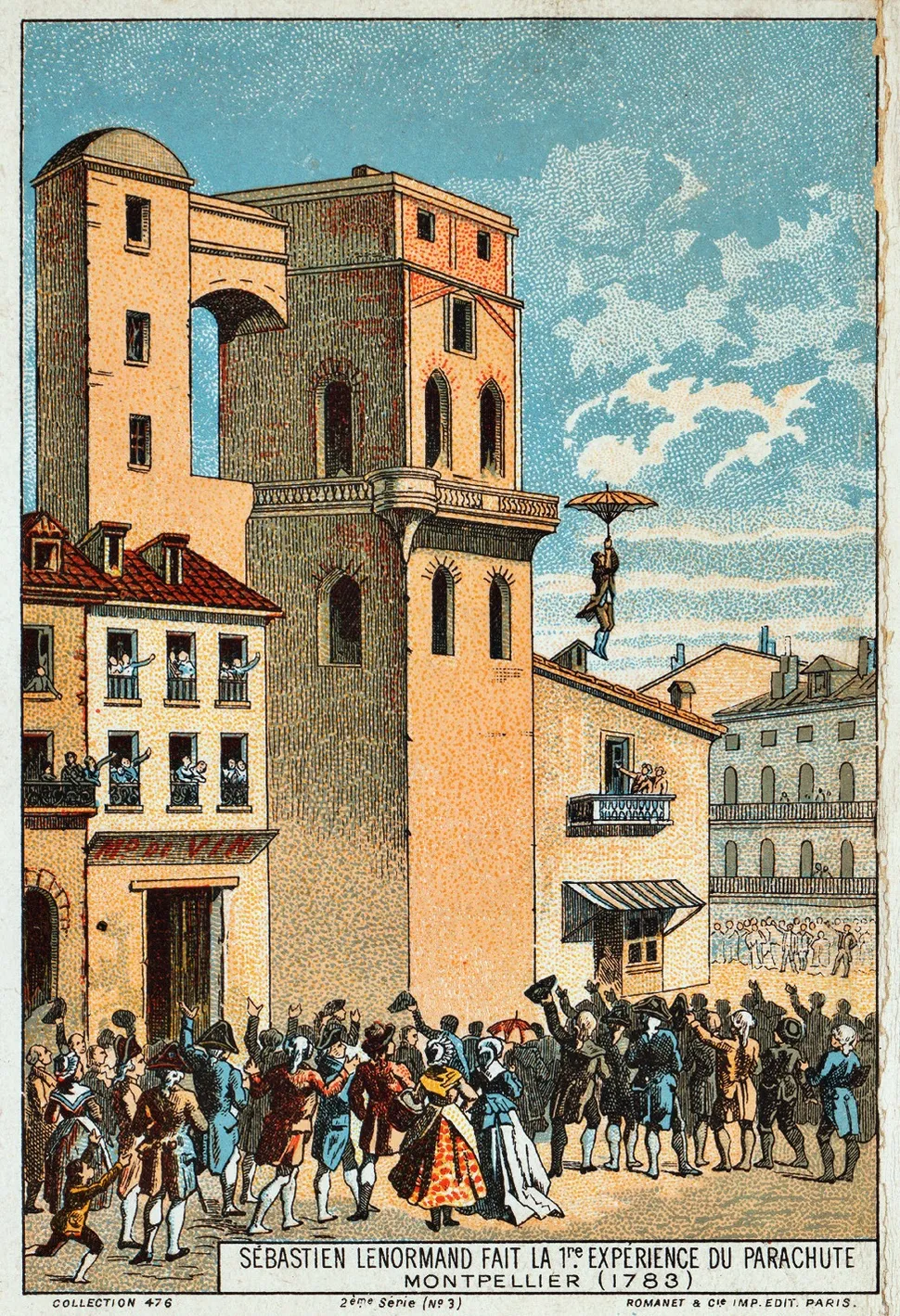
4. Aeron dirigible
The invention was in 1863. In 1863, American airship pioneer Solomon Andrews launched his Aeron dirigible, or steerable airship, over Perth Amboy, New Jersey. In 1866, the pilot flew over New York City, reaching as far east as Oyster Bay, New York. Andrews also wrote to President Abraham Lincoln, offering to use the Aeron in the American Civil War. But the government seemed to be uninterested.
The Aeron had no engines. It did not rely on a wing-shaped compound gasbag design and steering vane. Also, it allowed Andrew to control his height, speed, and direction. It did so by “gliding under gravity”. It used speed to create lift as the airship sinks and rises.
Andrews’ ideas inspired later experimental airship designs. Also, these vehicles continue to be promising concepts for several experimental airship designs today. This includes the Airlander Hybrid Air Vehicle. It gets some of its lift from lighter-than-air gas and some from its shape and motion.
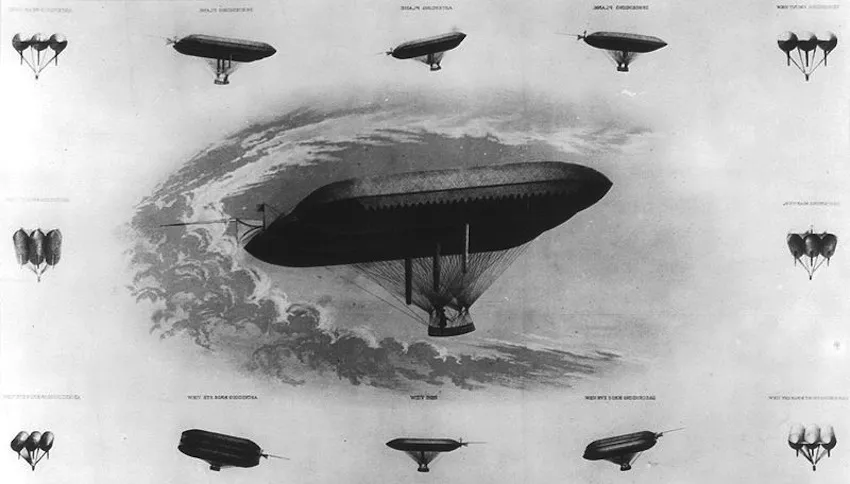
5. Artificial Albatross
It flew first in 1868. In 1856, Le Bris skillfully flew his “Artificial Albatross” on the windy beach of Sainte-Anne-la-Palud, just next to the extreme east of France. Thus, it is one of the early flying machines. He placed the aircraft on a cart drawn by a horse. It provided enough speed for it to reportedly reach a height of 330 feet (100 metres). It could fly for 660 feet (200 metres). Then, land at a point higher than his point of departure. It was a world first for a heavier-than-air aircraft.
Le Bris tried out a simpler version of his Artificial Albatross. He did so with better control in 1868. The support of the French Navy helped him. He did so by distributing his body weight. It is the principle used in modern hand gliders and parasails. He also used wings that could tilt. There is a photograph of Le Bris and the later aircraft. Somebody took it in the city of Brest in 1868. We think it is the first of a flying machine.
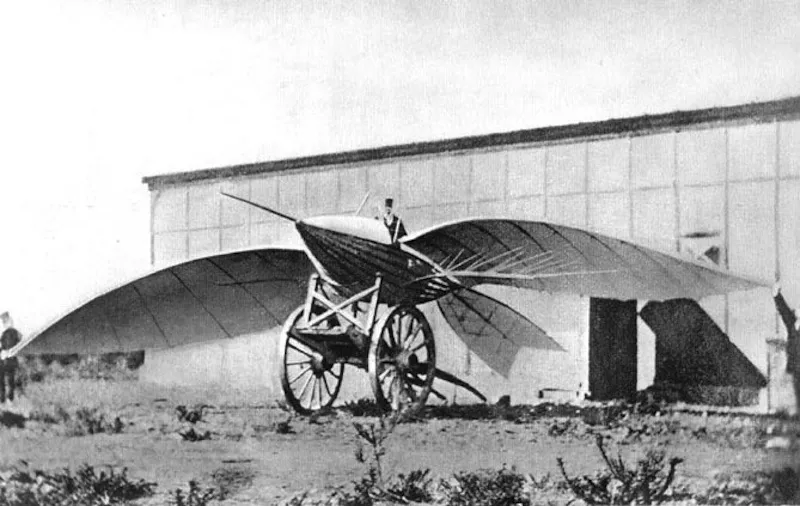
What were early flying machines made of
Mozi (also known as Mo Di) and Lu Ban invented the kite in China. Possibly as early as the 5th century BC (also Gongshu Ban). People stretched the silk over a split bamboo framework to create these leaf kites. The first Chinese kites discovered were rectangular and flat (not bowed). Later, they added a stabilising bowline to tailless kites. Designs frequently resembled flying insects, birds, and other real and mythical beasts. They outfitted some with strings and whistles to produce musical sounds while in flight.
Early designer flying machines
In 1846, we made Sir George Cayley the “Father of the Aeroplane.” He had begun the first rigorous study of the physics of flight in the late nineteenth century. He would later design the first modern heavier-than-air craft. Among his numerous accomplishments, his most significant contributions to aeronautics include:
- Clarifying our ideas and establishing the fundamentals of heavier-than-air flight.
- Developing a scientific understanding of bird flight principles.
- Conducting scientific aerodynamic experiments to demonstrate drag and streamlining. Also, centre of pressure movement, and lift increase from curving the wing surface.
- Defining the modern aircraft configuration, which includes a fixed-wing, fuselage, and tail assembly.
- Man-powered gliding flight demonstrations.
- Defining the principles of power-to-weight ratio in long-term flight.
Early flying machines failures
1. Ornithopter (circa 1500)
The consummate Renaissance man, Leonardo da Vinci, had a lifelong fascination with flight. He designed a variety of contraptions including this ornithopter. Thus, it is one of the early flying machines. Da Vinci’s machine, like many of his contemporaries and successors, mimicked the shape and movement of birds. It did so by having wings that the pilot manually flapped. It is unclear whether Da Vinci ever built his ornithopter. But even if he did, it probably wouldn not have worked. Birds are an obvious source of inspiration for heavier-than-air flight. But later aviators would reject the idea due to the constraints. Those imposes on the machine. Namely the amount of energy required and the amount of weight it forbids.
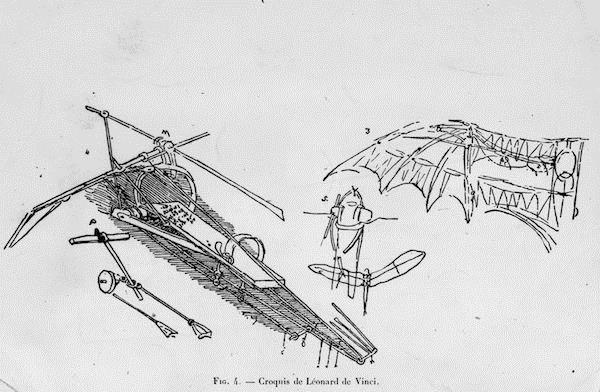
2. Paddles (1742)
The paddles of the Marquis de Bacqueville (1742). Thus, it is one of the early flying machines. There has been no shortage of would-be inventors strapping material to their bodies. And leaping off tall buildings in pursuit of glory, usually with disastrous results.
One such person was the Marquis de Bacqueville, Jean-François Boyvin de Bonnetot.
They strapped large paddles to his hands and feet and leapt from his mansion. He did so on the bank of the Seine in Paris in 1742. He attempted to fly over the 500-foot-wide river. The flight, which somebody documented in Rousseau’s Revue de la Normandie, appeared to be going well. Until the Marquis was about halfway across the river.
He reportedly began to waver. Possibly due to the wind, and fell to the deck of a riverboat. He broke one of his legs. The Marquis’ flight, according to Rousseau, became a running joke among the nobility, and he abandoned his aviation dreams.
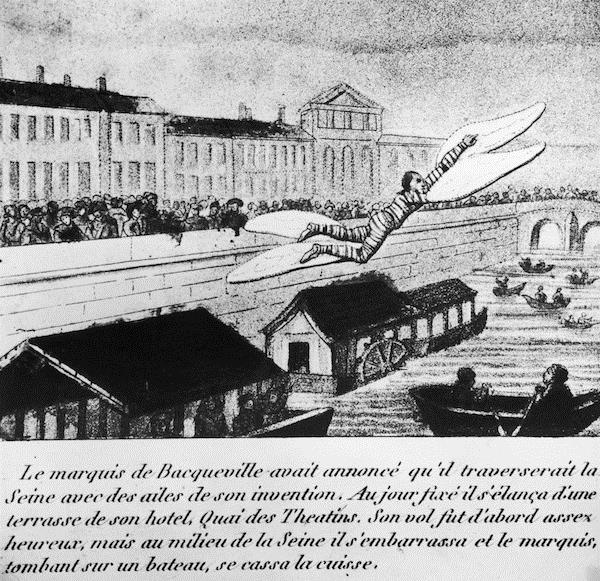
3. The Artificial Albatross (1856)
It is one of the early flying machines. This was developed by Jean-Marie Le Bris (1856). Jean-Marie Le Bris was a French aviator. He built The Artificial Albatross in 1856. Only just few years after Sir George Cayley’s first continual glider flight. More interestingly, the shape of the seabird inspired him. Le Bris took his Albatross to a beach and flew for 660 feet. He reached a height of up to 330 feet. The very first time a heavier-than-air craft began flying higher than its starting point. The Albatross reportedly crashed on his second flight, and Le Bris broke his leg.

4. Test Rig (1894)
Hiram Maxim was a successful inventor who created the Maxim machine gun, the first self-powered, recoil-operated machine gun. Maxim used some of his fortunes in 1892 to build an aeroplane test rig. Thus, it is one of the early flying machines. He did it with six tiers of detachable wings. Also, a 110-foot wingspan, two steam engines, and two propellers over 17 feet long. He never intended the test rig to fly and was fixed to a 1,800-foot track. Maxim intended to use it to test the effects of lift on various wing shapes and configurations.
During its third test in 1894, the 7,000-pound rig broke free from its track and flew 200 yards. It flew at 38 miles per hour. And, just a few feet above the ground before crashing back down.
Maxim soon abandoned the test rig. He concluded that the engines of the time were inefficient enough to compensate for their own weight. But besides this, he predicted that “aerial transportation will be a reality within ten years, even under the most adverse circumstances.
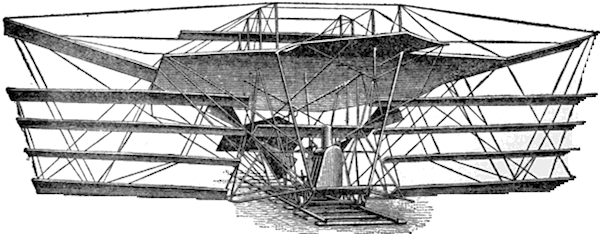
5. Avion III (1987)
Clément Ader was a French inventor who improved Alexander Graham Bell’s telephone and invented the first stereo sound system. Ader was also interested in aviation and built the Éole in 1886 by using steam engines of his own design. Apparently, it took off and flew 8 inches off the ground for 160 feet. This success piqued the interest of France’s minister of war. He supported the development of Ader’s third flying machine, the Avion III.
Thus, it is one of the early flying machines.
The Avion III, like his previous machines, was based on bats. It had a 48-foot wingspan, a crude rudder, and two steam-powered propellers.
The machine was tested on a circular track in 1897. But on its first flight, the wind caught it, pushed it off the track, and then itcrashed. Following the failure of the flight, the French Ministry of War withdrew its funding. Also, they scrapped the Avion. When proper aeroplanes started flying in the early 1900s, Ader would claim that the Avion III had flown in 1897. So it made him the first man in Europe to fly, but his claim has been thoroughly debunked.

Pics of early flying machines
Today, we can fly in a variety of ways, using a wide range of flying machines. We were able to reach beyond the sky and into space in 1961, which was far beyond what the men and women who dreamed of flying before that time could have imagined. Machines like hot air balloons, airships, gliders, and aeroplanes paved the way for their modern counterparts on our journey to the sky. Some were successful, while others were barely functional, but they all made important contributions to aviation history.
1. Aerial Screw (Helicopter)
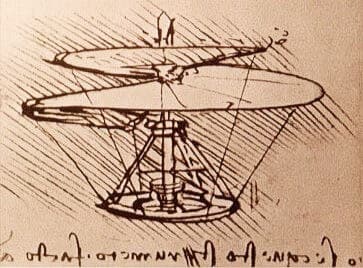
2. The First Hot Air Balloon

3. Dumont Personal Airship No. 6
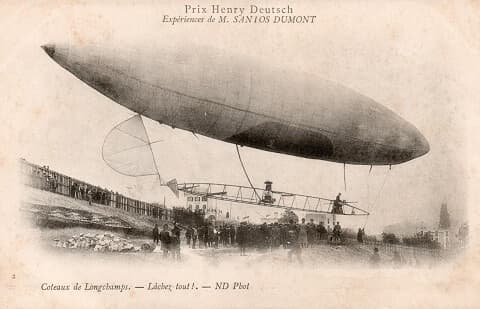
4. Degen Ornithopter

5. Phillips Multiplane
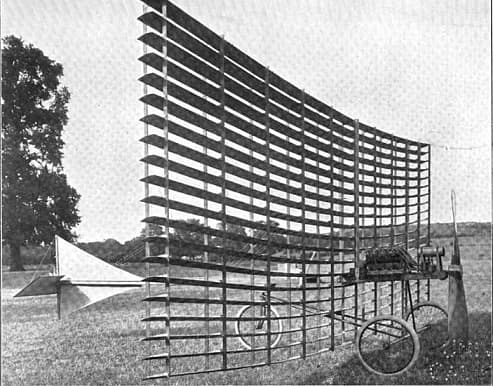
6. Aerial Steam Carriage

7. Lilienthal Hang Glider

8. 1896 Chanute Glider
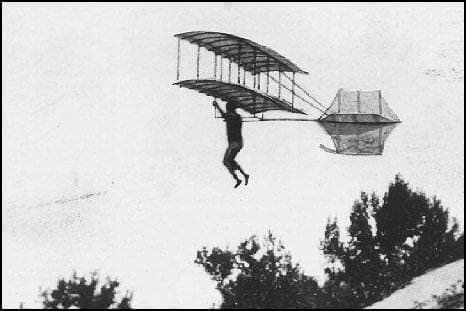
9. 1804 Cayley Glider
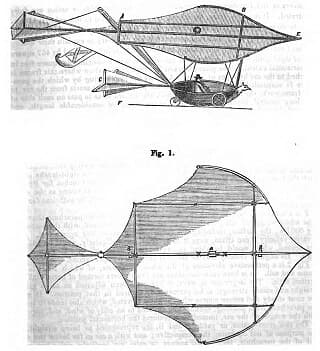
10. Whitehead No. 21
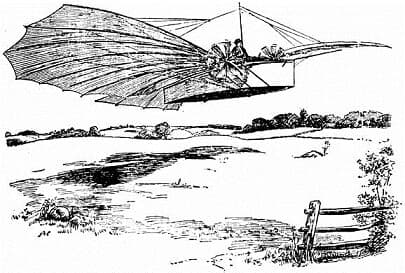
11. 14-bis
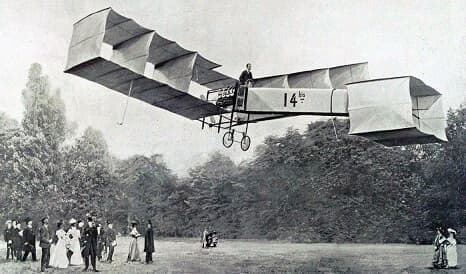
12. Wright Flyer
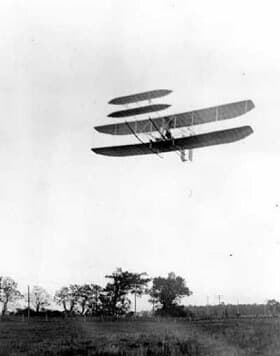
Early flying machines FAQs
1. What was the first flying machine?
The Wright Flyer, built in 1903, was the world’s first flying machine. Wilbur and Orville Wright spent four years researching and developing the Wright Flyer, the first successful powered aeroplane. On December 17, 1903, it took off from Kitty Hawk, North Carolina, with Orville at the controls.
2. Which toy is the oldest flying machine?
The earliest known flying toys in China were made of feathers at the end of a stick that was quickly spun between the hands and released into flight. While the Chinese top was only a toy, it was presumably the first tangible device that could be called a helicopter.
3. Did Leonardo da Vinci fly?
Da Vinci’s writings show that the French artist wished he could fly through the air as a bird in his hundreds of entries on human and avian flight. Unfortunately, the device did not exist because da Vinci did not build it, and even if he had, it would not have taken off.
4. What was the name of the first model aeroplane?
Excavators in Egypt discovered the first model aircraft in 1898. The six-inch body of the plane was accompanied by wings and resembled what we now call the fuselage. Archytas, a Greek philosopher, built and flew a model aeroplane known as “The Pigeon” for 219 yards.
5. What did the Wright brothers use instead of wheels on the Wright Flyer?
The Wright brothers designed and built their own propellers, assisted by their own wind tunnel (which they also designed and built themselves). The propellers functioned as rotating wings, producing horizontal lift, or “thrust,” that propelled the plane through the air.
6. When did the first flying technology appear?
In 1799, English aeronautical pioneer George Cayley established the modern concept of a fixed-wing aircraft, and he designed a glider (shown in the drawing) that was safely flown by his reluctant servant in the first recorded successful manned flight in 1853.
7. What kind of flying machine was imagined before the Wright Brothers took to the skies?
Early attempts to fly were made by mimicking birds by flapping their wings. Because human arms are too weak to flap wings for long periods of time, machines were created to assist arms or legs in flapping. These machines are known as “ornithopters.”
8. In 1960, how high could planes fly?
Planes at the time typically carried fewer than 20 passengers, had a cruising altitude of 3,000 feet or less. Additionally, they were slower than taking the train.
9. What were some of the ways people flew prior to aeroplanes?
People flew in balloons, airships, and gliders before aeroplanes, but never in anything heavier than air. Several scientists tested gliders throughout the 1800s, filling data tables with lift and drag data, but no gliders ran on power other than wind.
10. What was the first object to fly?
On December 17, 1903, the “Flyer” took off from level ground to the north of Big Kill Devil Hill, North Carolina, at 10:35 a.m. So, Orville flew the plane, which weighed about 600 pounds. The first heavier-than-air flight covered 120 feet in twelve seconds.

